Tools & Materials 
Measuring tape
Pencil
Hacksaw
Miter box
Level
Drill
Center punch
Razor blade
Marker
Masonry bit for tile wall
Phillips screwdriver
Caulk gun
Masking tape
Silicone sealant & remover
Tub door kit
Protective equipment
Curtains on your bathtub shower are a hassle. If you forget to tuck them inside the tub, water flows freely onto your bathroom floor. If you forget to slide them closed, mildew sets up shop in the folds. And every time you brush against them, they stick to your skin. Shower curtains certainly don’t add much elegance or charm to a dream bath. Neither does a deteriorated door. Clean up the look of your bathroom, and even give it an extra touch of elegance, with a new sliding tub door.
When shopping for a sliding tub door, you have a choice of framed or frameless. A framed door is edged in metal. The metal framing is typically aluminum but is available in many finishes, including those that resemble gold, brass, or chrome. Glass options are also plentiful. You can choose between frosted or pebbled glass, clear, mirrored, tinted, or patterned glass. Doors can be installed on ceramic tile walls or onto a fiberglass tub surround.
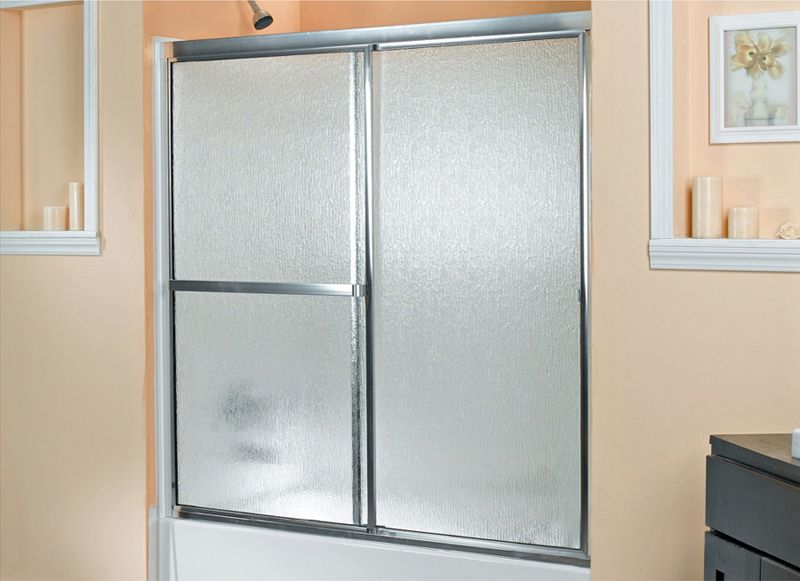
A sliding tub door framed in aluminum gives the room a sleek, clean look and is just one of the available options. A model like this fits into a 60" alcove, so it can replace a standard tub, as long as you can provide access to the plumbing and an electrical connection.
 HOW TO INSTALL SLIDING TUB DOORS
HOW TO INSTALL SLIDING TUB DOORS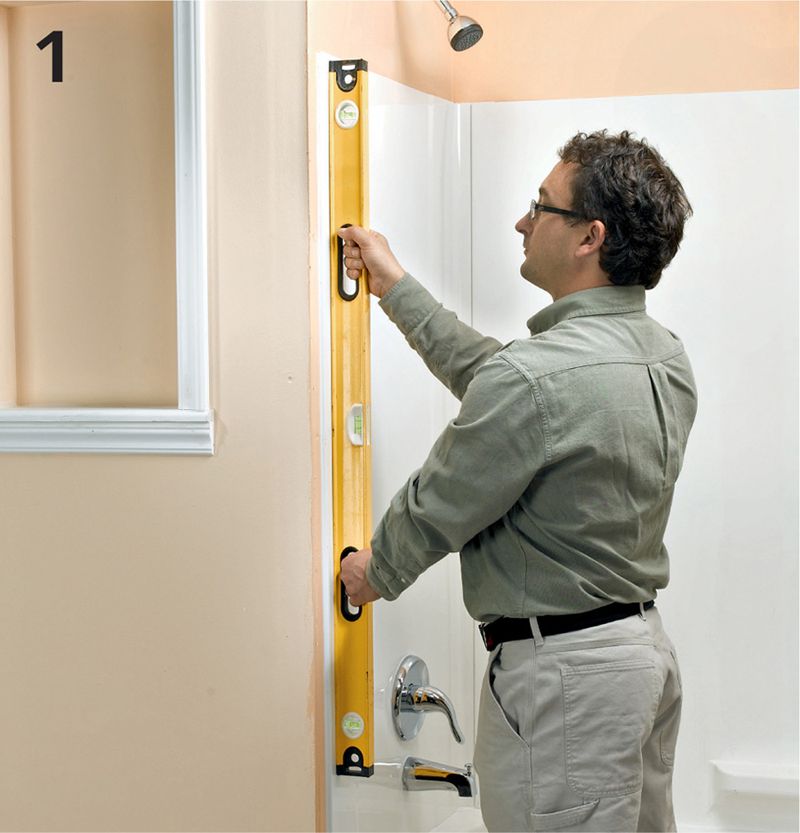
Remove the existing door and inspect the walls. Use a razor blade to cut sealant from tile and metal surfaces. Do not use a razor blade on fiberglass surfaces. Remove remaining sealant by scraping or pulling. Use a silicone sealant remover to remove all residue. Remove shower curtain rods, if present. Check the walls and tub ledge for plumb and level.
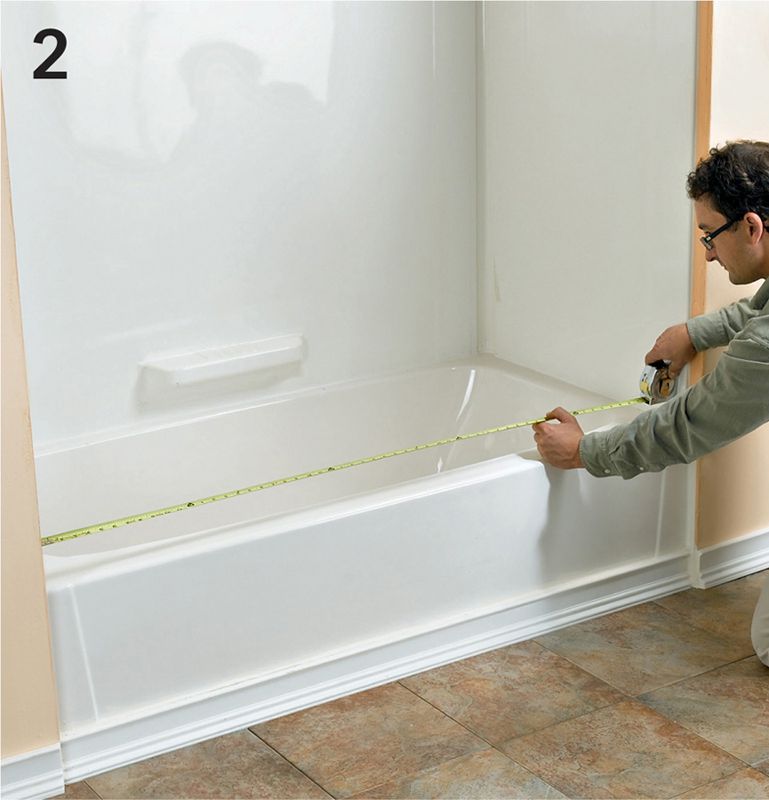
Measure the distance between the finished walls along the top of the tub ledge. Refer to the manufacturer’s instructions for figuring the track dimensions. For the product seen here, 3/16" is subtracted from the measurement to calculate the track dimensions.
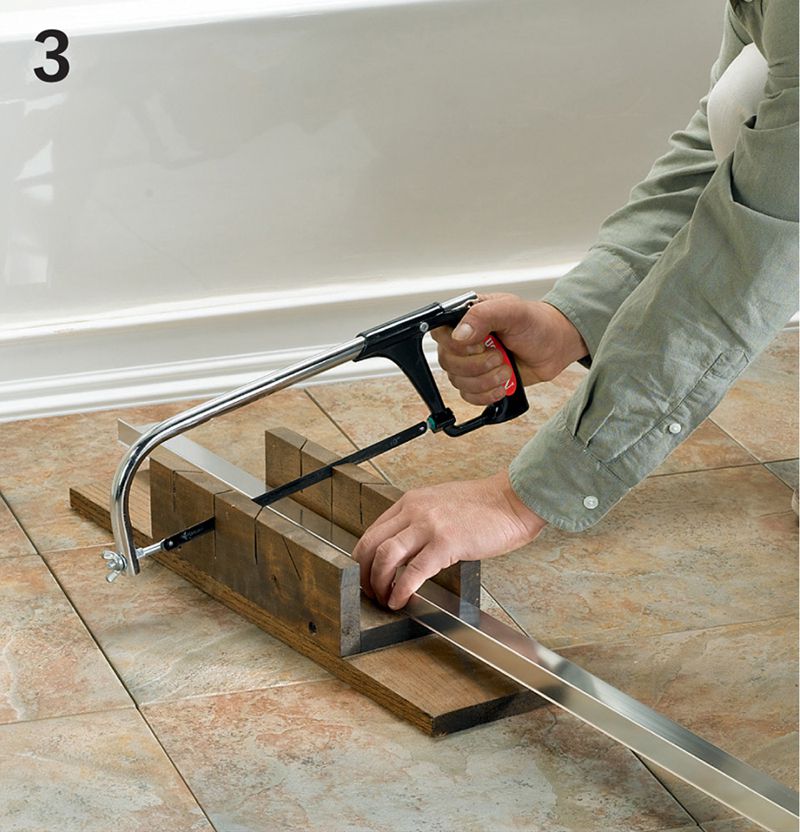
Using a hacksaw and a miter box, carefully cut the track to the proper dimension. Center the track on the bathtub ledge with the taller side out and so the gaps are even at each end. Tape into position with masking tape.
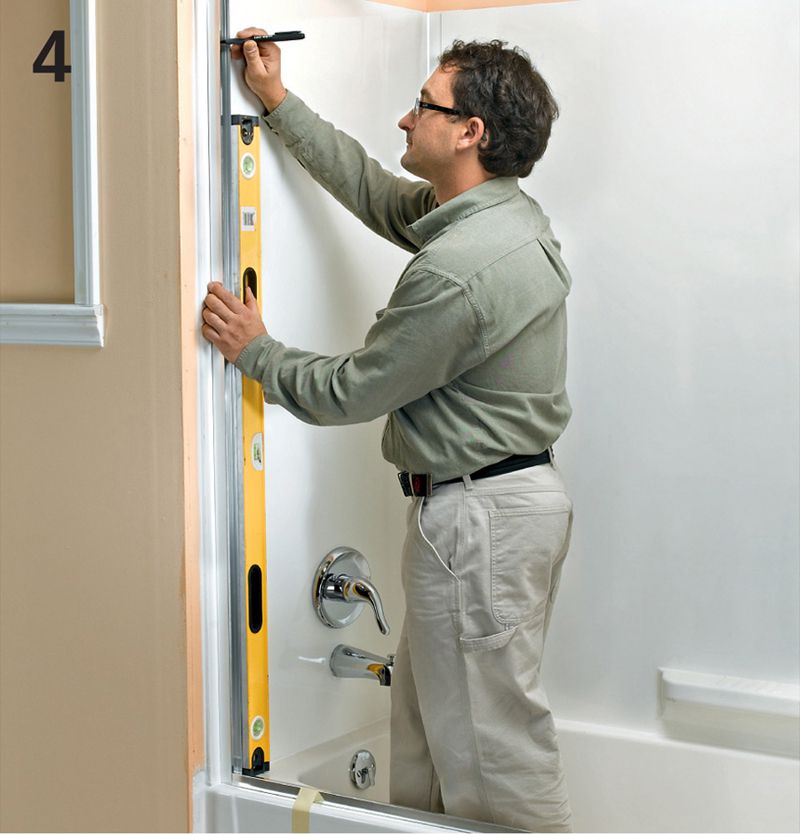
Place a wall channel against the wall with the longer side out and slide into place over the track so they overlap. Use a level to check the channel for plumb, and then mark the locations of the mounting holes on the wall with a marker. Repeat for the other wall channel. Remove the track.
Drill mounting holes for the wall channel at the marked locations. In ceramic tile, nick the surface of the tile with a center punch, use a 1/4" masonry bit to drill the hole, and then insert the included wall anchors. For fiberglass surrounds, use a 1/8" drill bit; wall anchors are not necessary.
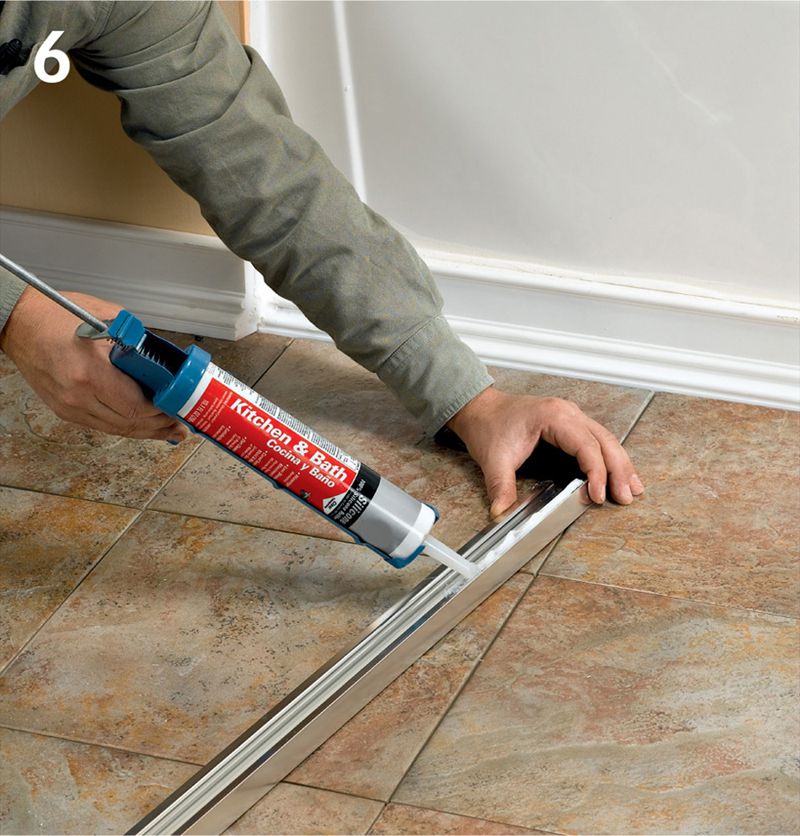
Apply a bead of silicone sealant along the joint between the tub and the wall at the ends of the track. Apply a minimum 1/4" bead of sealant along the outside leg of the track underside.
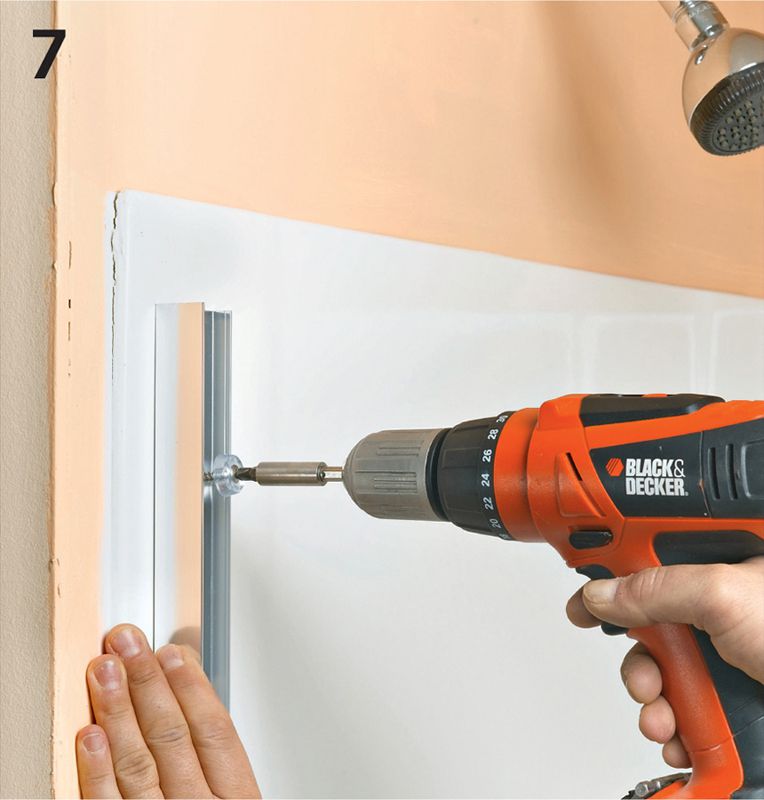
Position the track on the tub ledge and against the wall. Attach the wall channels using the provided screws. Do not use caulk on the wall channels at this time.
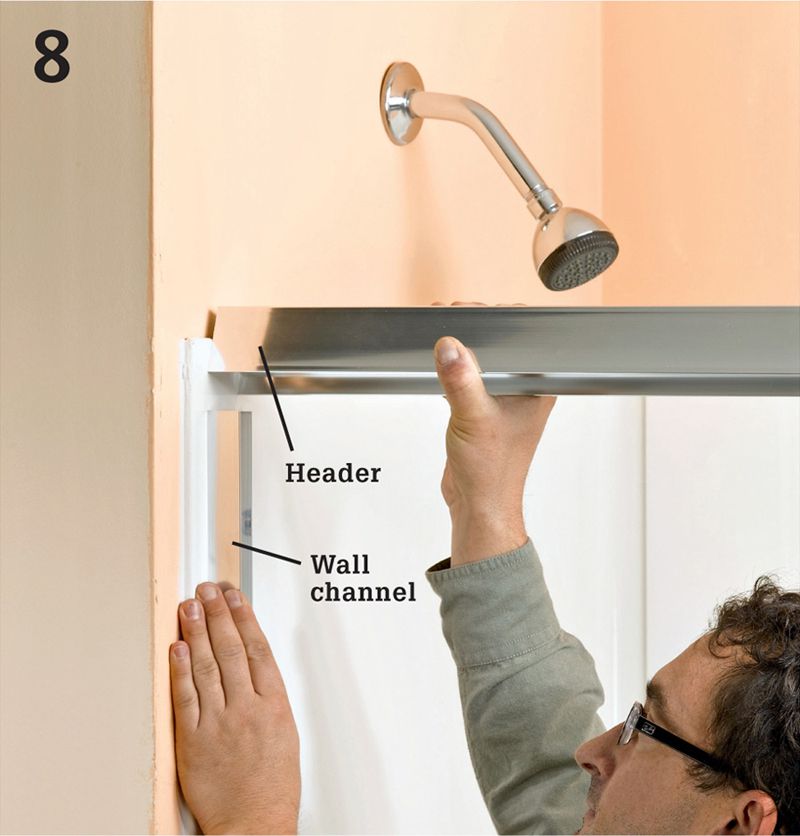
Cut and install the header. At a location above the tops of the wall channels, measure the distance between the walls. Refer to the manufacturer’s instructions for calculating the header length. For the door seen here, the length is the distance between the walls minus 1/16". Measure the header and carefully cut it to length using a hacksaw and a miter box. Slide the header down on top of the wall channels until seated.
Mount the rollers in the roller mounting holes. To begin, use the second-from-the-top roller mounting holes. Follow the manufacturer’s instructions for spacer or washer placement and orientation.
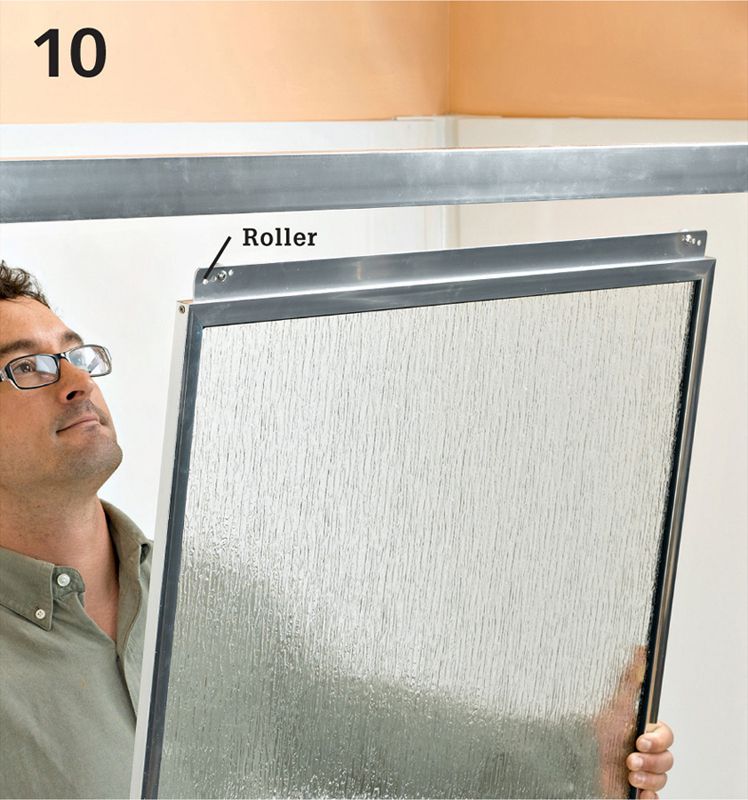
Carefully lift the inner panel by the sides and place the rollers on the inner roller track. Roll the door toward the shower end of the tub. The edge of the panel should touch both rubber bumpers. If it doesn’t, remove the door and move the rollers to different holes. Drive the screws by hand to prevent overtightening.
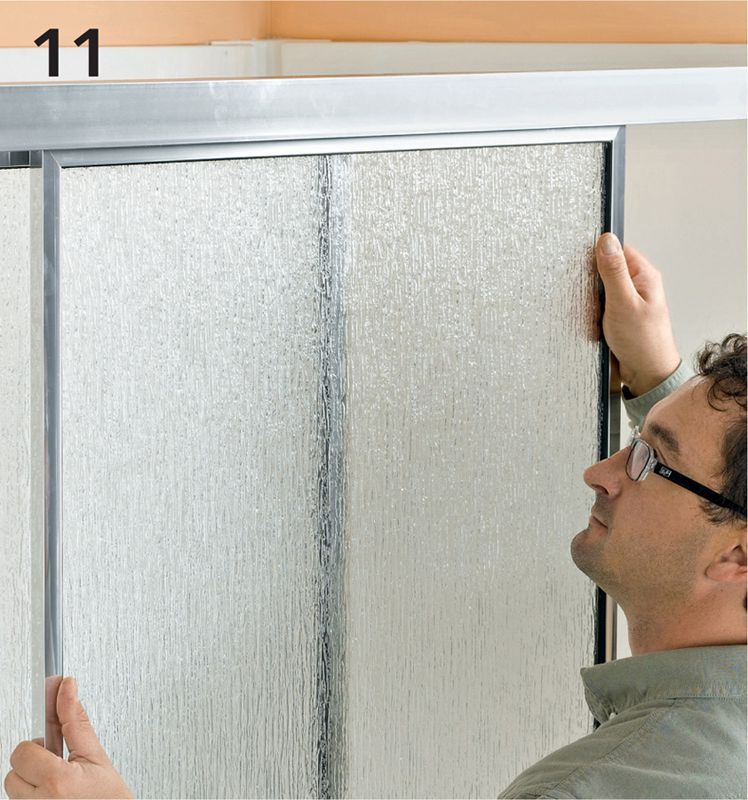
Lift the outer panel by the sides with the towel bar facing out from the tub. Place the outer rollers over the outer roller track. Slide the door to the end opposite the shower end of the tub. If the door does not contact both bumpers, remove the door and move the rollers to different mounting holes.
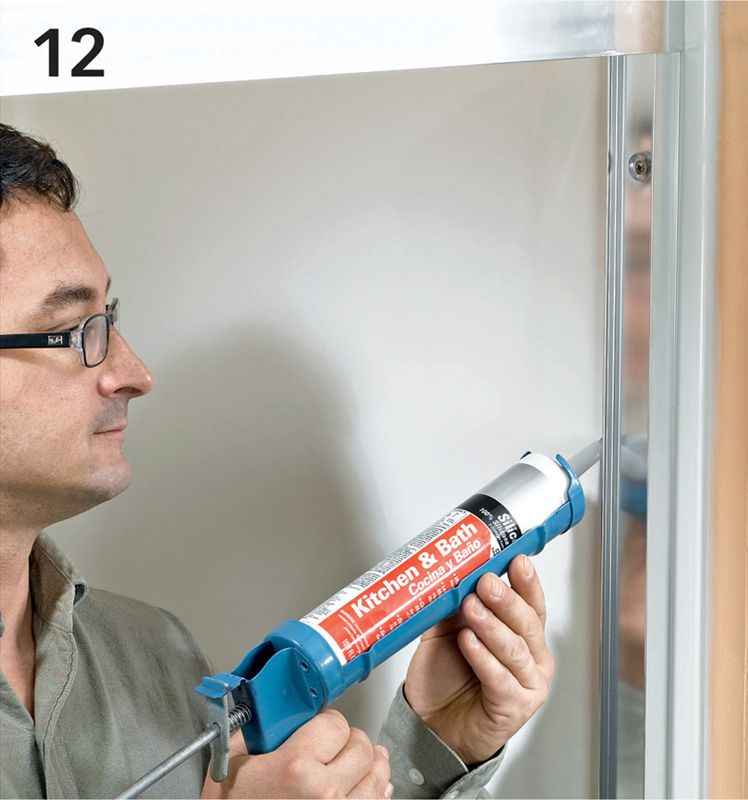
Apply a bead of clear silicone sealant to the inside seam of the wall and wall channel at both ends and to the U-shaped joint of the track and wall channels. Smooth the sealant with a fingertip dipped in water.